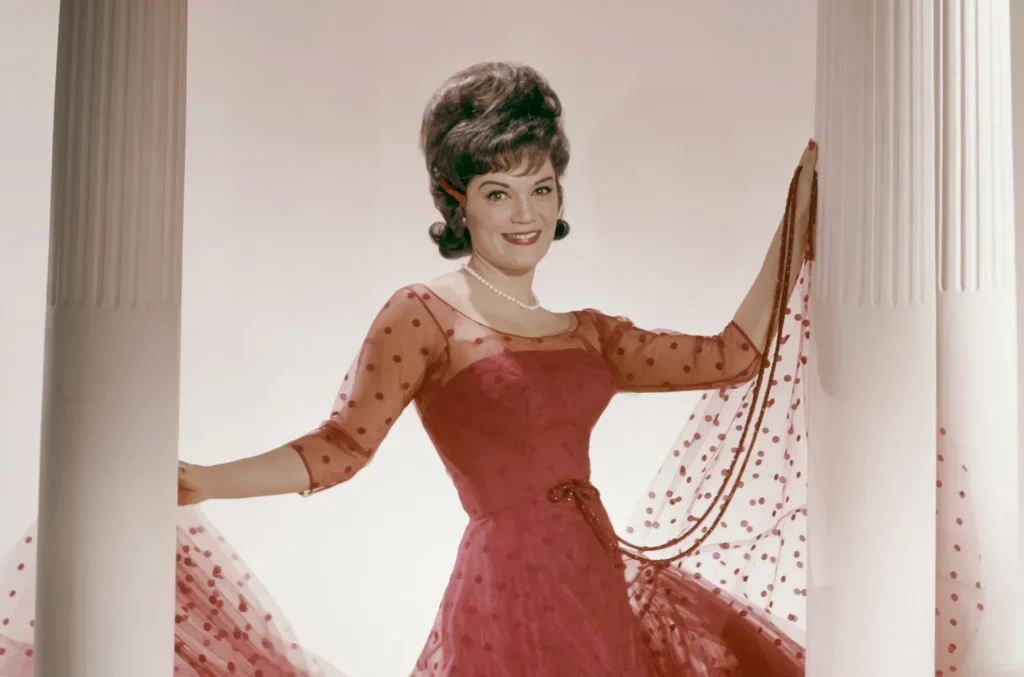the gentle
It started quietly, almost tenderly, sometime in early 2024.
A few TikTok users—vintage aesthetes, mothers, and archival enthusiasts—began pairing their short clips with an obscure Connie Francis track from 1962 called “Pretty Little Baby.” The melody shifted beneath grainy home videos and slow-motion scenes of newborns stretching, kittens yawning, sunlight moving across a wooden table. There was no campaign, no influencer boost, just an ambient rediscovery.
By spring, those snippets multiplied. A sound that had once lived in the shadow of “Where the Boys Are” and “Who’s Sorry Now” began to accumulate a quiet gravity of its own. It wasn’t trending yet; it was simply spreading, a murmur that crossed algorithmic borders without raising its voice.
The first listeners didn’t even seem to notice its age. They called it “that sweet lullaby song,” unaware that Francis recorded it more than sixty years earlier on analog tape. The past, softened by mono warmth, arrived disguised as comfort.
slow burn through 2024
By mid-2024, the track had become a recognizable presence in the “gentle-core” corner of social media—those pages filled with candlelight and handwriting, where users stitched together fragments of quiet life. Francis’s voice, delicate yet unwavering, offered something algorithms couldn’t counterfeit: human sincerity.
As the year unfolded, the song’s circulation expanded through themed edits:
-
“Vintage Motherhood,” documenting parenthood with grain filters and pastel subtitles.
-
“Nostalgia Kitchens,” short clips of baking filmed on VHS cameras.
-
“Sleepy Pets,” an entire sub-genre that re-introduced the track to millions.
Streaming platforms began to notice an unseasonal spike in Shazam queries for a song not listed on any official playlist. The phrase “Pretty Little Baby TikTok song” started appearing in search trends. Journalists called it the internet’s softest anthem.
Through it all, the progression remained gradual. There was no explosion—only accretion, a steady layering of affection that turned obscurity into presence.
the turning point
In July 2025, the pattern solidified. What had been scattered affection became measurable momentum. TikTok’s music analytics recorded over 120 million cumulative uses of the sound. Spotify added it to a new playlist called “Algorithmic Echoes.”
The shift was visible in tone as well as scale. Earlier in the year, the song belonged to domestic and romantic nostalgia. By summer, it began to intersect with emotional self-work. Therapists, life coaches, and creators of “inner-child healing” videos adopted the track as background score. They paired affirmations with Francis’s melody—“You were always enough”, “You are safe now”—and in doing so, transformed a forgotten pop lullaby into communal therapy.
The gentle swing and brushed drums now carried psychological weight. Users described the track as “the sound of being loved when you didn’t know you needed it.” The comment sections filled with tears and gratitude. “I don’t know why this makes me cry,” wrote one listener; another replied, “Maybe it’s your younger self hearing it.”
By late July, “Pretty Little Baby” wasn’t just a resurfaced oldie—it was a cultural phenomenon defined by continuity rather than virality. It had learned to live in the feed like background breathing.
this month
As the year turns colder, the song resurfaces again, subtly re-contextualized. Now, in November 2025, it soundtracks “soft holiday” montages—families decorating, city lights reflecting off wet streets, cats curled beside mugs of cocoa. The same melody that soothed infants in spring now warms households entering winter.
Its recurrence feels inevitable. Each seasonal loop builds upon the previous one, weaving the song into an annual rhythm much like “Rockin’ Around the Christmas Tree” or “Jingle Bell Rock.” But unlike those festive staples, Francis’s piece isn’t seasonal by design. Its adaptability—its absence of context—lets it move fluidly through moods.
Music data analysts now describe this phenomenon as a gradual-cycle revival, a sustained curve of attention that rises and falls without ever disappearing. The algorithm treats the song like a trusted memory, reintroducing it whenever the culture leans toward tenderness.
architecture
Why does “Pretty Little Baby” persist when so many vintage resurgences fade?
Partly because of structure. The song’s 15-second refrain fits perfectly into looped video formats. Its lyrics—short, direct, open—allow endless reinterpretation. A partner, a pet, a newborn, even a self addressed in healing—all can inhabit “baby.”
Equally vital is its sonic texture: the soft hiss of tape, the almost-breathless string arrangement, the warmth of analog recording. For ears raised on digital perfection, those imperfections read as truth. The sound becomes tactile, comforting in its fragility.
The result is a perfect meeting of technology and nostalgia: an analog artifact reborn inside an algorithm designed for infinite replay. The song becomes what media scholars call an affective loop—a repetition that soothes precisely because it repeats.
connie francis
Francis herself, long retired, watches from afar. Interviews from late 2024 captured her surprise at the revival. “I’d completely forgotten recording it,” she said with a laugh. “It’s like hearing someone else sing it.” That disconnection gives the story its poignancy: an artist detached from her own legacy witnessing a second life generated by strangers.
Her voice, once broadcast on AM radio, now circulates in fragments through billions of phones. For many listeners, she is not a historical figure but a disembodied warmth, a spectral mother of the feed. The irony is delicate—the woman who once sang to millions now comforts them unknowingly.
trend
What distinguishes the 2025 surge is its absence of historical context. Unlike previous retro trends—say, Elvis remixes or 80s synth revivals—this movement isn’t about the 1960s as an aesthetic era. It’s about the feeling of the past: safety, softness, simplicity.
Audiences don’t approach the song as history; they encounter it as mood. This detachment allows emotional freedom. Without needing to know who Connie Francis was, users assign the sound their own meanings. Memory becomes communal imagination.
This transformation—nostalgia without memory—marks a new stage in digital culture. The archive doesn’t just resurface; it reincarnates.
subtle
If earlier decades prized spectacle, the mid-2020s prize softness—a cultural counterweight to digital overstimulation. Francis’s song, with its unhurried rhythm and absence of irony, embodies this aesthetic of restraint. It doesn’t demand attention; it rewards stillness.
In marketing circles, it’s become a shorthand for authenticity. In cultural theory, a case study in the endurance of affect. In everyday life, it’s just the tune that makes people exhale. The power is subtle but immense: a lullaby turned lingua franca for collective calm.
As long as there is fatigue, there will be need for softness—and the algorithm, ever perceptive to longing, will keep retrieving it.
impression
To trace “Pretty Little Baby” from early 2024 whispers to November 2025 saturation is to witness how culture now evolves—not by eruption, but by accumulation. The song’s journey embodies the modern algorithmic life cycle of nostalgia: gentle onset, sustained comfort, seasonal return.
It reminds us that the digital era doesn’t erase feeling; it redistributes it. The same system that accelerates outrage can, paradoxically, preserve tenderness.
When Connie Francis sang those opening lines six decades ago, she couldn’t have imagined a world where they would cradle strangers through glowing glass. Yet here they are, spinning once more—not on vinyl, but in infinite rotation, humming softly through November nights.
In the loop, there is stillness. In stillness, memory. And in memory, the quiet endurance of a song that never stops being loved.
No comments yet.








